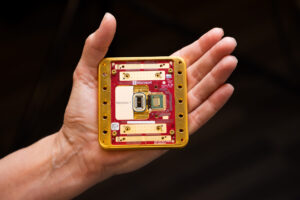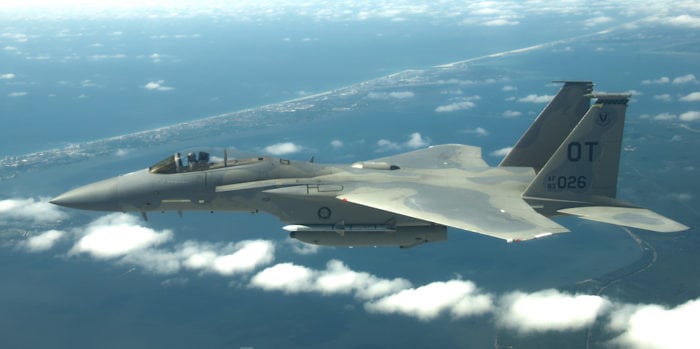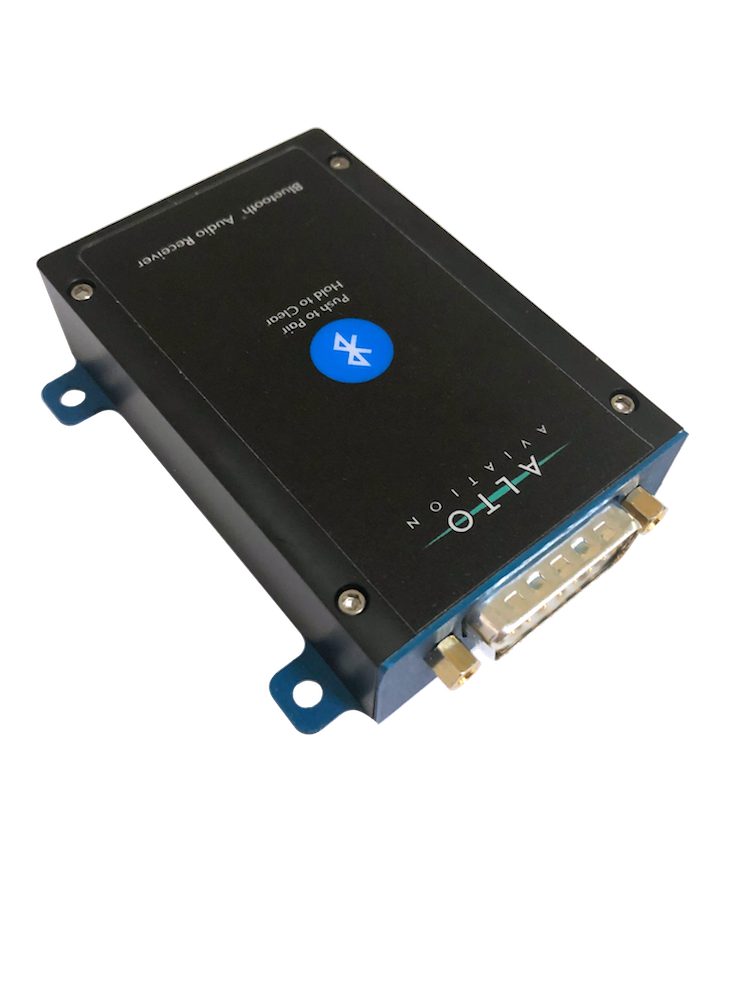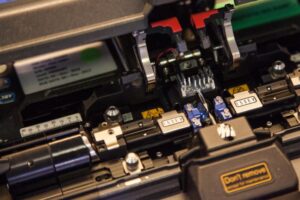14 New Avionics Technologies Unveiled at AEA 2019
By Woodrow Bellamy III | March 28, 2019
Send Feedback | @WBellamyIIIAC
Business and general aviation avionics manufacturers presented their newest products for the first time publicly during the Aircraft Electronics Association’s (AEA) new products introduction session at its annual convention in Palm Springs.
A trend among new products introduced at AEA 2019 is the use of easy to understand digital interfaces, multi-mission functionality and optimization of size, weight and power in designs.
While we did not cover every new product unveiled, here is an overview of some of the more innovative avionics capabilities announced during the new product introduction session.
Bluetooth Audio Interface Controller
Alto Aviation has a new bluetooth audio interface controller with receiver and transmitter configurations that enable mobile device wireless streaming and the use of bluetooth headphones in aircraft cabins. The controller recently passed DO-160G testing and is expected to achieve technical standard order status by the end of April according to Kevin Hayes, vice president of sales for Alto Aviation.
PAC45A Digital Special Mission Audio Controller
PS Engineering’s vice president Pete Campbell describes the PAC45A as using a “hub and control architecture to consolidate all wiring within the avionics bay.” The hub is the central wiring location for all of the radios with an RS-422 serial bus connected to each control head, which can be installed anywhere within an aircraft cabin or cockpit with a data connection back to the hub.
The company introduced the original version of the PAC45 in 2017, and now has support for up to eight communications radios, bluetooth and satcom interfaces as well as two 10-watt speaker amplifiers.
T-RX Avionics Radio and Pulse Testers
Canadian manufacturer CCX introduced its new line of T-RX avionics radio and pulse testers, a trio of tablets for testing avionics radios. The 10-inch tablets have touch screens and are capable of performing 100 different tests, including VOR, Instrument Landing System (ILS), VHF Comm, DME Test.
Nexsys Time Delay and Current Sensor
New embedded time delay and current sensor components have been added to Applied Avionics Nexsys component product line. The time delay is capable of generating outputs for delayed ground or open signals after a specified trigger event. Some of the applications for the new time delay component include protection from power bus overloading and staggering system startups when multiple systems within an aircraft are powered up simultaneously. One such application for the sensor technology is to support aircraft pitot heat failure monitoring.
Fifth Generation Lithium-ion Batteries

The new 20-amp hour, 30-amp hour and 40-amp hour variants of TrueBluePower’s fifth generation lithium ion aircraft batteries. Photo: Mid Continent Instruments and Avionics.
Mid Continent Instruments and Avionics subsidiary True Blue Power introduced its new fifth generation lithium ion main ship batteries. These are the company’s first on-condition, lithium-ion, engine-start batteries in three different variants, including a 20 amp-hour, 30 amp-hour and 40 amp-hour configurations.
An innovative new capability added to the company’s Gen5 batteries is the ability to communicate real-time, state of charge and state of health data via a built-in-test indicator.
The batteries can be programmed to meet the charge current limits, end of life capacity and engine start readiness for individual aircraft model types.
G3X Touch Flight Display
Garmin’s new G3X touch flight display is approved for installation in 500 single-engine piston aircraft models, and features standard wireless connectivity and synthetic vision. It can be used as a primary or multi-function display and is available in a 7-inch or 10-inch version.
RAD-45 Radar Altimeter Display
FreeFlight Systems’ new radar altimeter display system, the RAD-45, is designed to provide critical in-flight information such as altitude or trend indication information when there are no visual airport or flight path cues for pilots. It is a panel-mount display that is programmable via USB or micro SD card.
FreeFlight Systems’ new radar altimeter display system, the RAD-45, is designed to provide critical in-flight information such as altitude or trend indication information when there are no visual airport or flight path cues for pilots. It is a panel-mount display that is programmable via USB or micro SD card.
The company did not specify what helicopter model types the display has achieved certification for during the new product introduction session at AEA.
IFR HeliSAS Stability Augmentation System
Genesys Aerosystems has a new instrument flight rules (IFR) version of its HeliSAS autopilot system for legacy Part 29 twin-engine helicopters. It is is designed for two-axis (pitch and roll) autopilot configuration for dual-pilot IFR operations and three-axis (pitch, roll, and yaw) autopilot configuration for single-pilot operations.
The system includes automatic recovery to near-level flight altitude at all airspeeds and full authority control with parallel actuators. Metro Aviation has become the first operator to install and start flying the new system on an Airbus EC-145e.
Aeropoint 300 Engine Data Monitor
The AeroPoint 300 is BendixKing’s new engine data monitoring system for twin engine aircraft. Standard features include trend charting software, data recording of all engine parameters and a USB memory stick with 1 GB of recording capacity.
Touch Control Display Unit
The new touch control display unit was unveiled by Latitude Technologies as an interface for aircraft communications and navigation functionality. When paired with the company’s SkyNode S200-012, the TCDU provides a pilot interface for air traffic safety service communications. It also features a moving map display.
Evolution Display Software Upgrade
Aspen Avionics released a new software modification developed in response to a February airworthiness directive issued by the FAA. The directive required the disabling of the ADS-B In function for their Evolution line of displays, including the EFD1000 and EFD500. FAA issued the directive after pilots reported erroneous resetting of the display occurring when connected to an ADS-B transponder.
Top Mount Antenna Coupler
Viavi has a new top mount antenna coupler, the UC-584S, designed to provide isolation and shielding for aircraft transponder testing within ramp and hangar environments.
Stratotimer

Thommen Aircraft’s next generation onboard time management system, the Stratotimer. Photo: Thommen Aircraft
The Stratotimer is Thommen Aircraft’s new next generation onboard time management system. It features a full color high resolution display a digital with user manageable screen colors, programmable timers and GPS synchronization.
It also has a video display, including options for pilots to view door and hatch positions, cargo bay and other camera equipped areas of the aircraft.
TX56A Nav/Com Radio
Trig Avionics has a new family of navigation communication radio, including the TX56A and TX57A. The new radios monitor two communications or navigation frequencies, feature a two-place stereo intercom and a digital cockpit display interface.

































